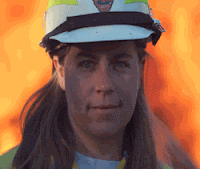 You may have heard of the Kindle, a very cool electronic reading device sold by Amazon. Using a cell phone signal, it can download books, magazines, newspapers, blogs, and documents which can then be read on the device. Books can be downloaded in less than a minute–magazines and newspapers in even less time.
You may have heard of the Kindle, a very cool electronic reading device sold by Amazon. Using a cell phone signal, it can download books, magazines, newspapers, blogs, and documents which can then be read on the device. Books can be downloaded in less than a minute–magazines and newspapers in even less time.
Wildfire Today is available on the Kindle beginning today–the first fire-related blog to be on the Kindle. You can subscribe to it through the device and have it automatically downloaded throughout the day as Wildfire Today is updated with new articles.
And, yes, you will have to pay for it. The subscription is $1.99 a month for wireless delivery. But, you’re thinking, why should you pay for Wildfire Today when you can get it free on your computer? Good point. I would have made it free on the Kindle, or at least would have set a very low fee, but those options were not available. Amazon decided on the price. But if you are not near a computer, but have a Kindle and a cell phone signal, you can still keep up to date with what’s happening in the world of wildland fire.
It uses the Sprint cell phone network to download material. That worried me at first, since I don’t have dedicated Sprint service here in the boonies of South Dakota, but it works fine here anyway. Obviously Sprint has agreements, roaming I guess, with other cell phone carriers. And it does not cost anything to download stuff, regardless of which carrier you are using.
Books cost around $9.99 each, and magazines and newspapers are around $0.49 to $1.50 each. It is fascinating to be able to grab, within seconds, today’s copy of the New York Times, Washington Post, USA Today, or dozens of other newspapers.
I took a Kindle on two trips recently, including an extended vacation at a beach house in southern Mexico (BEFORE the swine flu scare, thankfully!). Before the Kindle, I would have loaded my suitcase with a bunch of heavy books and magazines, but instead I put electronic copies of them on the Kindle.
The device weighs 10 ounces and is only 1/3 of an inch thick. It’s very easy to use and there is room to store 1,500 books.
A couple of months ago Amazon.com, that sells the Kindle, came out with a redesigned model, the Kindle 2, which has some ergonomic enhancements and a 25% longer batter life than the original model. And just a couple of days ago they announced a new, larger version, the Kindle DX, which will be available this summer and has a 9.7″ screen, compared to the 6″ screen on the Kindle 2. I find the 6″ screen to be perfectly adequate, and the device can be easily packed and transported.
The devices are not particularly cheap, with the 6″ screen version selling for $359. The new 9″ one will be $489.
The battery life is great, lasting for several days before needing to be recharged, which can be done with a wall charger or a USB cable from a computer. It uses a new technology, “e-ink”, that consumes no power while the image is being displayed on the screen.
Reading a book on the Kindle is a pleasant experience. To turn a page, press a button near your thumb and in about a second or less there it is. The screen has excellent contrast and is easy to read without any strain. It does not have color capability–that would have eaten up the battery much more quickly.
Reading a newspaper is not as enjoyable as browsing through a paper version. A table of contents is available–you can browse by sections and see the names of articles. Then you click on an article to see and read it. Or, you can just click from one article to the next one, eventually browsing through the whole newspaper. It is still easy to read the newspaper, but browsing electronically is a different experience than holding a paper version in your hand and glancing at the headlines.
You can also transfer documents, such as Microsoft Word documents, to the Kindle. I put copies of my airline itinerary and passport on it. I figured if I lost my passport, having an image of it on my Kindle would make getting a replacement a little easier.




